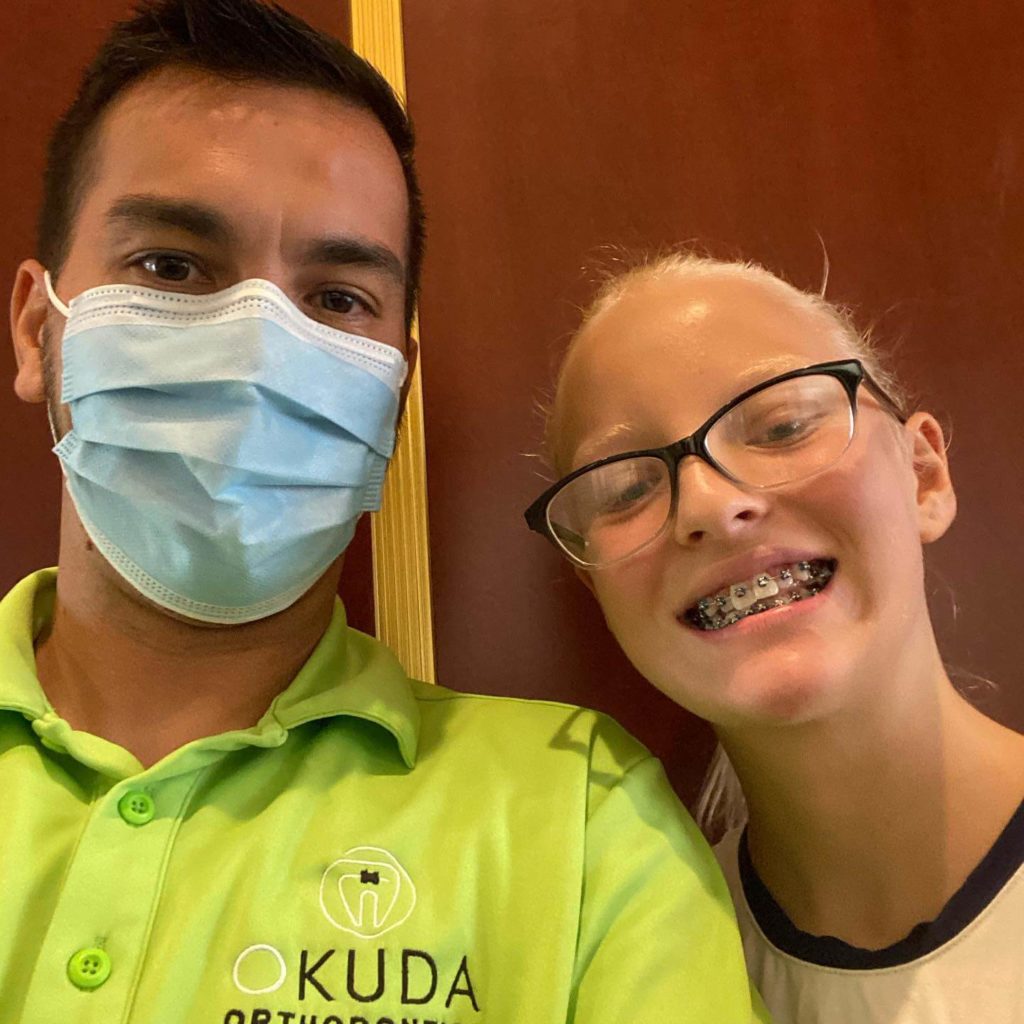Brackets? Check. Archwires, o-rings, and elastic bands? Check. These are the main components of conventional braces. But have you ever thought about how all those parts work together to straighten your smile? Braces have been around for literally centuries, so it’s safe to say we’re pretty familiar with them, but a refresher is always helpful! So here’s a helpful primer covering the different parts of braces and what they do.
Parts of Braces
Brackets
So what exactly are brackets for braces? They’re those small metal squares stuck to your teeth. Held in place by dental cement, they act like tiny handles that hold the archwire across your teeth so that all your teeth can move into their correct positions. Brackets in traditional braces also hold the o-rings that keep the archwires from slipping out of place.
Different types of braces have different types of brackets but they come in basically two camps. Metal brackets for metal braces come in their natural silver color or have gold-plating on them for a unique look. Brackets for ceramic braces are white and look similar to real teeth — these types of braces are also called “invisible” or “clear” braces.
Today’s modern dental braces have smaller, more discreet brackets than in years past, a welcome feature for those who prefer less noticeable teeth straightening! At Okuda Orthodontics, our Damon™ self ligating braces have discreet, streamlined brackets, resulting in better comfort and easier cleaning.
Archwires
The braces wire that bends around your teeth is called an archwire, and, just like brackets, archwires in modern braces are more discreet than in previous times. An archwire connects all your brackets together and does the heavy-lifting when it comes to aligning your teeth — they’re definitely small but mighty!
So how does an archwire work? The archwire’s bend creates pressure for the teeth to follow, moving them gradually into place. And if spaces have to close between teeth, the archwire is a track for teeth to slide along as they move to fill the gaps. Archwires are typically swapped out for new ones or refitted as your teeth shift into alignment.
Bands
Bands do the same job as brackets but are cemented to your molars. These thin metal rings fit around your back teeth and have a small attachment that holds onto the archwire. But before you get bands put in, you typically need spacers for braces — small rubber bands put between your molars to create room for the bands to slide into. Spacers come out before your bands go in.
O-Rings
It’s easy to confuse o-rings with elastics for braces. O-rings are the tiny elastic ties that fit around each bracket. They help hold the archwire in place and come in clear or a rainbow of colours.
Elastics/Rubber bands
What do rubber bands do for braces? They hook from a bracket or band in the upper jaw to one in the lower jaw, creating a force that gradually moves your teeth and jaws into an aligned, functional bite. Elastics work really hard to correct jaw misalignments like overbite, underbite, open bite, and crossbite so they can lose their stretchiness quickly. You typically change them once a day to make sure they’re continually effective.
A Few of the Smaller Braces Parts
Coil springs
Coil springs serve as spacers for braces. They slide onto the archwire and sit between two brackets, exerting an outward force: a closed coil spring maintains an existing space while an open coil works to create a larger space.
Wire ties
Sometimes wire ties are twisted around brackets to hold the archwire in place instead of o-rings. You might need wire ties for a more secure hold.
Buttons
These circular pieces of plastic are attached to the backs of your upper teeth to help open a deep bite or are placed behind bottom teeth to help move teeth in a crossbite. An elastic chain is attached to the buttons to move teeth.
Getting Braces at Okuda Orthodontics

Now that you have a good handle on the parts of braces for teeth, you might like to know what braces treatment looks like with us, your Henderson orthodontist.
First, a friendly team member does quick and painless diagnostics, including a digital 3D scan of your teeth and skull, and takes digital photos of your face, teeth, and smile. Next, Dr. Brady Okuda examines your mouth, and together with the diagnostics, develops a diagnosis and presents your treatment plan options. Then it’s your turn: ask all the questions you want — we’re happy to help you make the most informed decision possible!
We’ll chat about what to expect at every stage in your treatment, as well as the cost and any payment plans or insurance options we can work on together.
The next appointment is all about getting your braces on (yay!); and we promise it doesn’t hurt at all! Dr. Okuda will stick your brackets on and thread the archwire through. We’ll wrap up with tips and tricks on caring for your teeth and new braces! Over your treatment time, we’ll see you a few times to check in on your progress.
The Damon™ Braces System
So what is this Damon™ Braces system we mentioned earlier? Seriously, Damon™ self-ligating braces are next-level and we’re proud to be the leading provider of them in the Henderson area.
First, Damon™ braces use a patented slide mechanism to connect archwires to brackets, allowing the wire to move freely. Next, without the need for elastics or o-rings, Damon™ braces are more comfortable, have less friction and make maintaining good oral hygiene easier. And third, Damon™ braces give you a broader smile than conventional braces — a look preferred by more than two-thirds of adults. Damon™ Braces come with clear or metal brackets, whichever suits your style.
The Best Braces Journey in Henderson and Las Vegas, NV
With our expert hands and innovative Damon™ braces, you know you’ll get the smile results you’ve always wanted. Contact us today for a free initial consultation in-person or virtually. Get a healthy, spectacular smile you’ll love!


